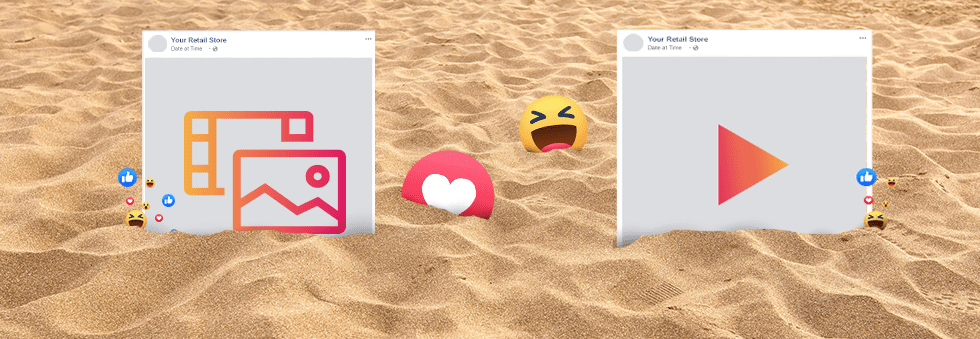It’s easy to get lost in the modern sea of relevant social media platforms. New websites and apps that directly impact your industry appear and can gain traction almost overnight. TikTok as we know it only established its format in August of 2018; by February of 2019, the app had 1 billion global downloads.
Beneficial as they are for your brand’s marketing strategy, not all social media platforms are equally useful. Each serves different industries with platform-specific strengths that complement the companies that advertise with them. Instagram is the best platform for anything related to beauty and cosmetics, for example. It’s primarily a visual platform, directly contributing to high-resolution images of beauty products performing well. On the other hand, LinkedIn is a professional networking platform where users can connect with colleagues, learn from other experts in their field, and apply for jobs. Advertisers on that platform aim to reach professionals that make decisions for their company such as choosing software or a consultant service. Content that informs, like blogs or videos, performs well on LinkedIn.
If your brand was an early adopter of social media marketing then you’ve likely already discovered which platforms enable you to achieve your marketing goals. But if you’re revisiting your existing social media efforts to optimize ROI – or need to decide if your brand should be on TikTok and other new platforms – it can be challenging to determine where to focus your efforts.
Here are our tips for choosing a priority social media platform that is aligned with your company’s identity and plans for revenue generation.

What’s Your Objective?
Marketers sometimes consider goals simply as a way to measure campaigns’ outcomes after choosing a strategy. Before considering a social media platform- we recommend strictly defining your goals before developing any sort of creative strategy. A proper goal is specific and measurable; it provides direction for your campaign and allows you to identify when you’re off-course.
Here are some common digital marketing goals to consider when building a new campaign:
- Increase Brand Awareness
- Generate High-Quality Leads
- Increase Website Traffic
- Acquire New Customers
- Build Engagement
- Generate Conversions
So how should you decide which will be your benchmark to measure your marketing efforts?
Social media platforms are optimized to distribute different content types to distinct demographics. LinkedIn’s obvious strengths lie in B2B marketing. There are 61 million senior-level influencers and 65 million decision-makers active on the platform. LinkedIn has optimized its advertising features for this purpose. With their user-friendly lead generation forms, marketers gain qualified leads through successful campaigns. Facebook’s community-driven format is a better destination for improving brand engagement. The fitness and healthcare industries perform particularly well in Facebook advertising, with higher than average click-through rates and low cost-per-click. E-commerce has similar success on Facebook. For both of these industries, users are accustomed to participating in conversations on brand posts or joining groups to talk about their favorite products.
TikTok’s algorithm shows entertaining content to users on their “For You” feed. That content often features products that are relevant to the user or related to their interests. A user who follows sports teams on the platform might see creators reviewing different brands of sports equipment. The #TikTokMadeMeBuyIt tag is much more varied in the products featured but serves the same purpose: for users to show each other their favorite items (and where to buy them). In addition to branded challenges, it all serves to increase brand awareness and improve brand engagement.
Identifying a platform’s strengths can help you determine if it will help you meet your marketing goals. Social platforms with paid media options generally have resources for marketers with this information. But if you have the time and budget, it doesn’t hurt to do some testing on your own. You may find success on an unexpected platform.

Demographics
Demographics are another incredibly important component to consider when choosing a key social media platform. Social media usage is high for all age groups with predictably larger numbers for younger age groups. But the gap in usage is small: 73% of users aged 50-64 use some form of social media compared to 81% of users aged 30-49. In other words, Millennials remain the largest user group, but their parents and grandparents are on social media too.
The challenge is determining which platform has features to meet your marketing goals and caters to your target demographic. You don’t always have to do extensive research to rule out some platforms; LinkedIn is not the best choice to advertise consumer products, for example. But the user base of some platforms in 2022 may surprise you.
Instagram has an accurate reputation for hosting a younger demographic: 64% of Instagram users are under the age of 34. It’s also the most utilized for influencer marketing and a hub for in-app online shopping. 72% of millennials buy beauty products through Instagram, revealing the strength of the platform in editorial cosmetic and lifestyle images.
Often grouped with Instagram is TikTok, but their self-reported data shows a different distribution of age groups. 65% of Gen X entertainment enthusiasts are active on TikTok. Again, millennials are the user group with the highest engagement: 79% of millennial TikTokers are likely to be following a brand. Baby Boomers are not included in this demographic report, indicating their usage is so low as to not be worth analyzing.
Facebook’s age demographics are more spread out, but keep in mind that the sheer number of users is far higher than any other platform. As of April of 2022, Facebook is pushing 3 billion active monthly users. 13.7% of Facebook users are aged 45-54 and 18% are aged 35-44.
Type of Content

The most engaging content is dependent on the platform you post to. Specialized platforms like YouTube and TikTok clearly demand video content. But for multi-use platforms, certain types perform better than others.
Here are the best content types by platform, according to LinkedIn:
- Instagram: high-resolution photos, stories and reels, and visual quotes
- Facebook: short videos, blog posts, and curated content
- LinkedIn: articles, case studies, market research, sales decks, and company news
Great content won’t get the attention it deserves on the wrong platform aimed at the wrong audience. Understanding what platforms your target audience is using as well as how to capitalize off that platform’s optimized content type is key to succeeding in social media marketing.

Syndicate your Content
Identifying a priority social platform is excellent for your long-term marketing strategy. Regardless of which platform you choose, your organic reach is limited to users already following your brand. If you have retailers- they have social media followings too and they’re eager to share brand content on your target social platforms. ThumbStopper syndicates brand content straight to retailers’ pages to help both reach interested consumers at the hyperlocal level.
Book a demo to learn more about what ThumbStopper can do for you.




